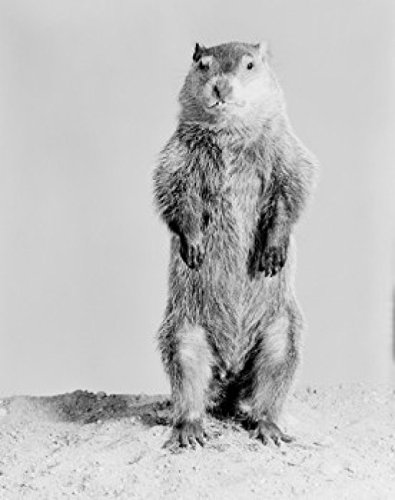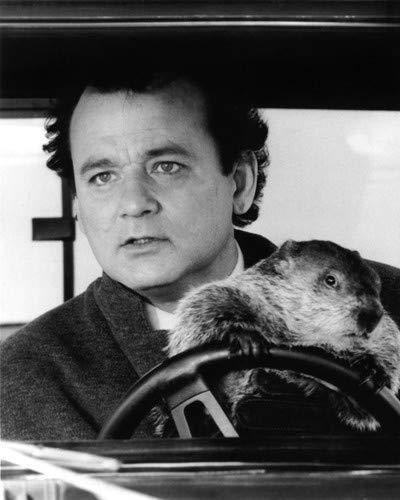Groundhog Day, a popular tradition in the United States, is based on the legend of Candlemas Day, which states:
"For as the sun shines on Candlemas Day, so far will the snow swirl in May..."
On Groundhog Day a groundhog comes out of his hole after a long winter sleep to look for his shadow. If he sees it, he regards it as an omen of six more weeks of bad weather and returns to his hole. If the day is cloudy and, hence, shadowless, he takes it as a sign of spring and stays above ground.
Punxsutawney Phil
Groundhog Day has been celebrated since 1887 in Punxsutawney, Pennsylvania, where "Punxsutawney Phil" is the designated groundhog. Groundhogs are covered with coarse grayish hairs (fur) tipped with brown or sometimes dull red.
They have short ears, a short tail, short legs, and are surprisingly quick. Their jaws are exceptionally strong.
A groundhog's diet consists of lots of greens, fruits, and vegetables and very little water. Most of their liquids come from dewy leaves.
The average groundhog is 20 inches long and normally weighs from 12 to 15 pounds. Punxsutawney Phil weighs about 20 pounds and is 22 inches long.
A groundhog's life span is normally 6 to 8 years.
History
The earliest known American reference to Groundhog Day can be found at the Historical Society of Berks County in Reading, Pennyslvania. The reference was made Feb. 4, 1841 in Morgantown, Berks County (Pennsylvania) storekeeper James Morris' diary: "Last Tuesday, the 2nd, was Candlemas day, the day on which, according to the Germans, the Groundhog peeps out of his winter quarters and if he sees his shadow he pops back for another six weeks nap, but if the day be cloudy he remains out, as the weather is to be moderate."
Arbiter of Spring
Assuming that the equinox marked the first day of spring in certain medieval cultures, as it does now in western countries, Groundhog Day occurred exactly six weeks before spring. Therefore, if the groundhog saw his shadow on Groundhog Day there would be six more weeks of winter. If he didn't, there would be 42 more days of winter. In other words, the Groundhog Day tradition may have begun as a bit of folk humor.
Some ancient traditions marked the change of season at cross-quarter days when daylight first makes significant progress against the night. Other traditions held that Spring did not begin until the length of daylight overtook night at the Vernal Equinox. So an arbiter, the groundhog / hedgehog, was incorporated as a yearly custom to settle two traditions..
Groundhogs Prefer Life in the City
Groundhogs have a better survival rate in urban settings than in rural areas, according to University of Illinois study on how the animals are responding to changing land-use practices.
City groundhogs have two advantages: they are getting more habituated to humans and keep eating even when humans are around, and they have fewer predators like coyotes.
Vigilance behavior is when they are alert and scanning the landscape for predators. Groundhogs primarily rely on their sight to spot a predator rather than scent, so if there is any kind of disturbance, they stop what they're doing and look in that direction.
Of course, if you're standing up on your hind legs all the time looking for predators, you can't be feeding, so in order to survive hibernation they need to spend as much time as possible feeding during the active season. If they're living in an urban setting, they can be less vigilant because they've become habituated to human disturbance and so they spend more time foraging for food.
Groundhogs lose 35 to 40 percent of their body weight during hibernation, which is typically from mid-November to late February or early March.
In the city and residential areas, groundhogs have fewer natural predators and food available from gardens and plantings, but their habitat is fairly fragmented. Studies show that urban groundhogs have restricted movements and consequently smaller home ranges than rural groundhogs.




